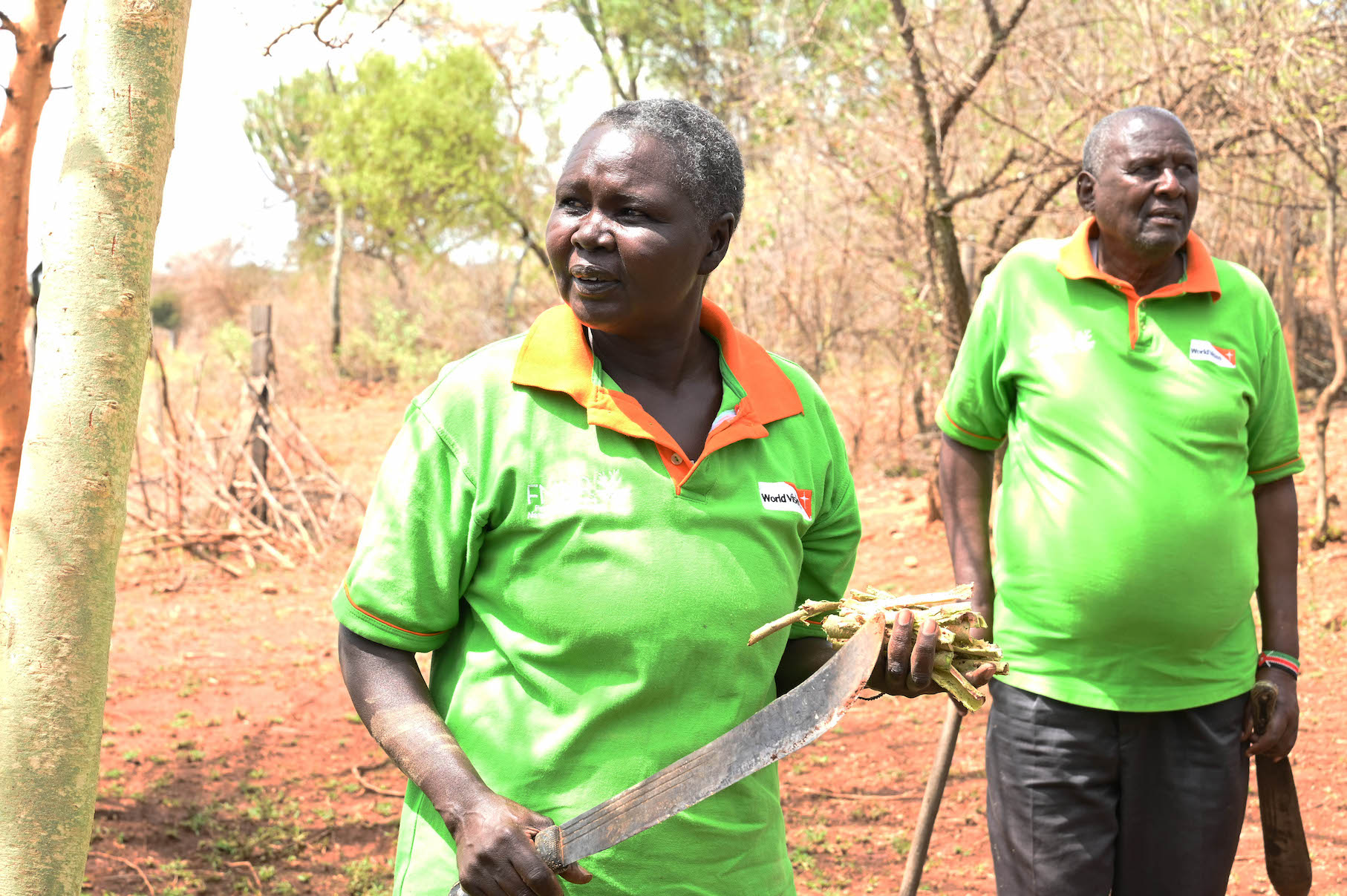Trees strengthen resilience of smallholder farmers to climate change
By Hellen Owuor, Communications Specialist (CRIFSUP), World Vision Kenya
Nancy is a smallholder farmer living in Ngusero village in Baringo County. This is an area where rainfall patterns are gradually becoming erratic due to the impacts of climate change.
This has resulted in perennial droughts that lead to insufficient food, pasture, and water for communities and their livestock. In such extreme climatic conditions, livestock are emaciated, and some even die.
However, Nancy has been able to withstand all these challenges.

During periods of severe drought, her livestock may become weak, but none of them die. She attributes this to practicing the Farmer Managed Natural Regeneration (FMNR) approach.
As her smallholder farmer, the practice, which she began in 2015 after being trained by World Vision, has strengthened her household food security and resilience to climate change. For nearly a decade, the FMNR approach has cushioned her against the severe effects of climate change.
Nancy is among the farmers from Baringo and Nakuru Counties who were trained through World Vision's East Africa FMNR pilot project that began in October 2012. The project was funded by the Australian Government through the Australian NGO Cooperation Program (ANCP).
"I am grateful to World Vision for training us on FMNR. Before practicing the approach, this land was bare. The soil was eroded, and we used to walk for long distances to get firewood.
Now, with the regenerated trees, we have a beautiful environment, shade, herbal medicine, fresh air, soothing sounds of birds chirping, increased pasture yields, and fodder from trees," Nancy says.
In preparation for the dry season, Nancy usually harvests surplus pasture. She then dries and grinds it, and proceeds to store the pasture for use during the dry season.
During long dry spells or in times of drought, the pasture may be depleted. In such situations, Nancy usually uses the leaves and barks of trees on her farm to supplement the animal feed.
The over 30 species of regenerated acacia trees on her farm, as well as other tree species, offer a diversified source of nutrition for her livestock.

The trees have also provided a favorable environment for apiculture (beekeeping) to thrive, thus enabling Nancy to gain extra household income from selling honey.
From these proceeds, she can buy additional animal feed for her livestock in the dry season.
"The FMNR approach gave me a sense of financial independence since I don't have to constantly rely on my husband to provide money. Our relationship has also improved. As a family, we are happier."
Nancy was also trained in other beneficial activities that complement the FMNR approach. They include growing drought-resistant crops, water harvesting, using energy-saving cookstoves and improved financial literacy through World Vision's Savings for Transformation (S4T) model.
Nancy's story is a clear indication of how the practice of FMNR can cater for the needs of communities by providing food, firewood, pasture, or income for purchasing other commodities.
As an FMNR champion, Nancy's farm is a learning site that is frequented by guests from far and wide who come to learn from her successes in implementing the FMNR approach.
In March 2023, she hosted guests from 11 countries who represent the first cohort of World Vision staff that has been trained on the organisation's Regreening Communities Project Model.
This is a community-led environmental restoration project model. It provides opportunities for communities to actively restore and protect their landscapes using various regreening approaches such as planting trees or reviving already existing ones through the FMNR approach.
The approach will enable communities to develop sustainable livelihoods. This will give them access to necessities such as food, water, and firewood. It will also restore the environment, thereby making communities less vulnerable to climate-related disasters and natural resource-based conflicts.
Through such initiatives, World Vision continues to live up to its commitment to improving the lives of vulnerable children and communities living in fragile contexts.